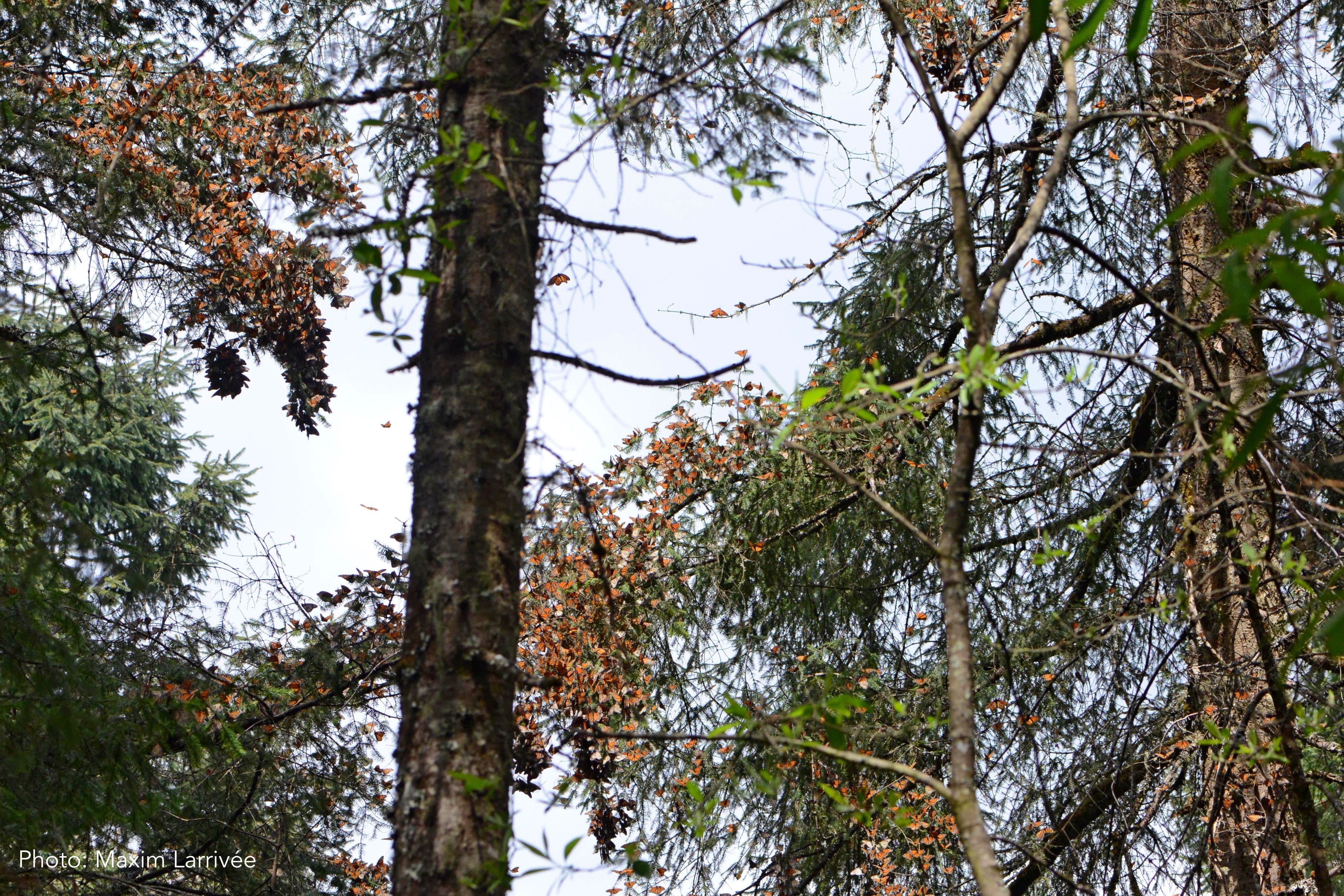Mission Monarch coordinator

Tree leaves are becoming as bright as monarchs’ wings, and it’s time to say goodbye to our favorite butterflies. The monarchs you observed during summer (maybe even as caterpillars!) are leaving us for the trip of a lifetime. As you are reading this, they are travelling towards the mountains of central Mexico, where they will spend the winter.
A unique migration
Only a few species can boast of such an achievement. Travelling over 4000km is not an easy task for a butterfly. How do they overcome this titanic challenge? Well, monarchs have more than one trick up their sleeve!
While previous generations live about a month as adults, the butterflies of the migratory generation can live up to more than nine months. They put on hold the development of their reproductive organs at the time of emergence (at the exit of the chrysalis), and complete their development in the following spring. This pause in reproductive development allows them to invest their energy in storing reserves to fuel their migration. Monarchs take advantage of the strong winds in migratory corridors to travel over vast distances. Along the way, they stop when conditions deteriorate or near big water bodies waiting for ideal conditions and refuel with water and nectar. Year after year, migrating butterflies crowds are observed at the same roost sites, along the great lakes
How do they know where to stop? What guides them to the wintering grounds that their great-grandparents had visited? What other tricks do they use to succeed that great a journey? Mystery! The impressive monarch migration maintains its share of secrets. If monarchs disappear, so does their migration, taking with it the answers several unanswered questions facing scientists.
On behalf of monarchs, thank you!
This summer, you were more than 1,000 participants to inventory nearly 150 locations during 220 missions. The data you have collected will be analyzed by the research team. Throughout the mission, your contribution will create a profile of monarchs’ preferences in choosing their breeding habitats. The better we understand the monarchs, the better we can protect them!
And we have learned much, already! Migration patterns, late arrival dates and small populations give us things to think about. We will adapt the protocol and optimize Mission Monarch in order to learn as much as possible about the butterfly’s reproduction habits.
So thank you for the time and energy you have dedicated to the cause. Each of your comments is like a monarch wing beat: with all those beats put together, we will reach our destination! We count on you: keep up the good work, tell everyone about Mission Monarch, and become and ambassador for monarchs! Stay tuned to follow the new monarch and to prepare for the next Mission Monarch season!
More articles
- All monarchs are orange…
- The science behind the citizen science
- All you need to know about Mission Monarch

